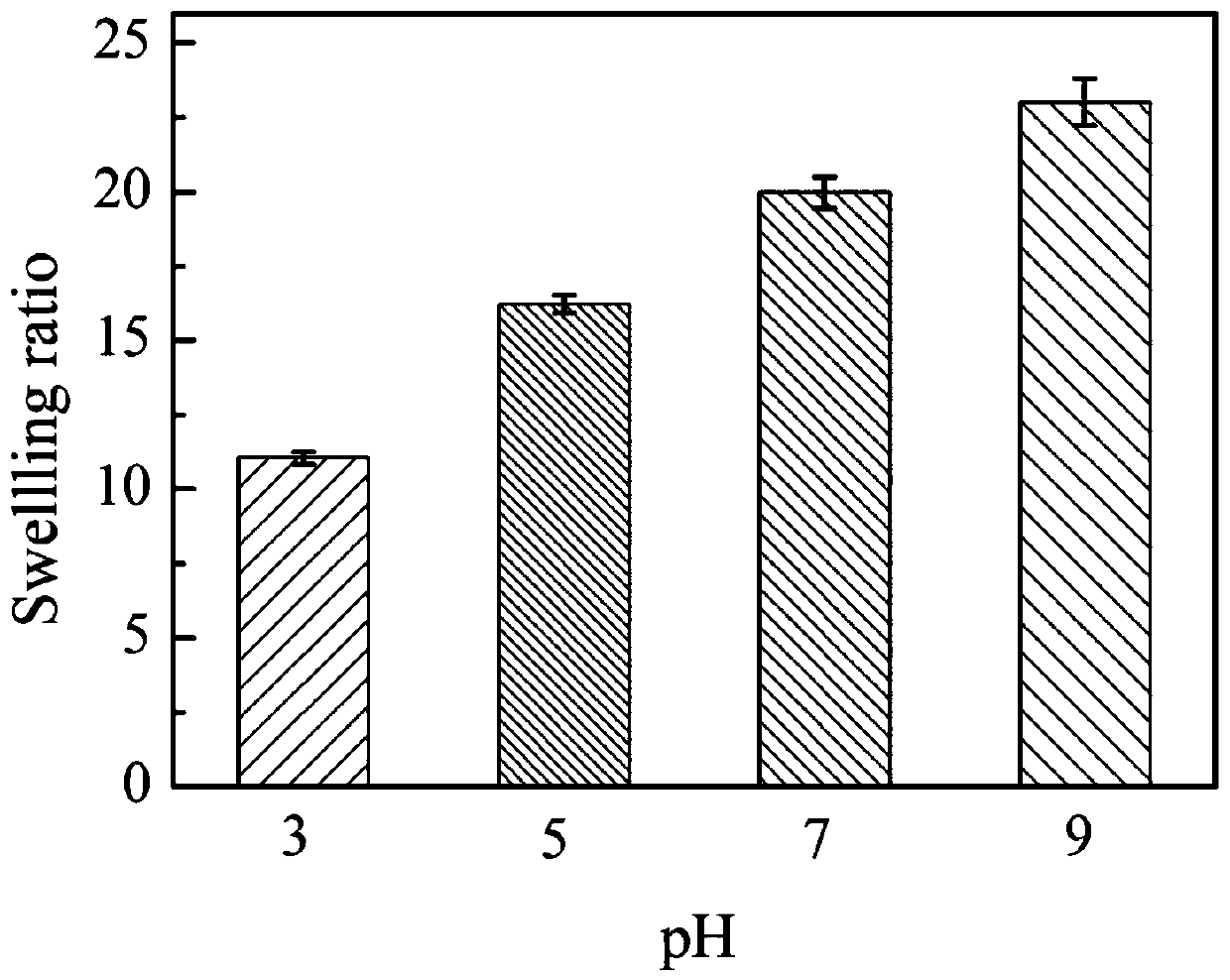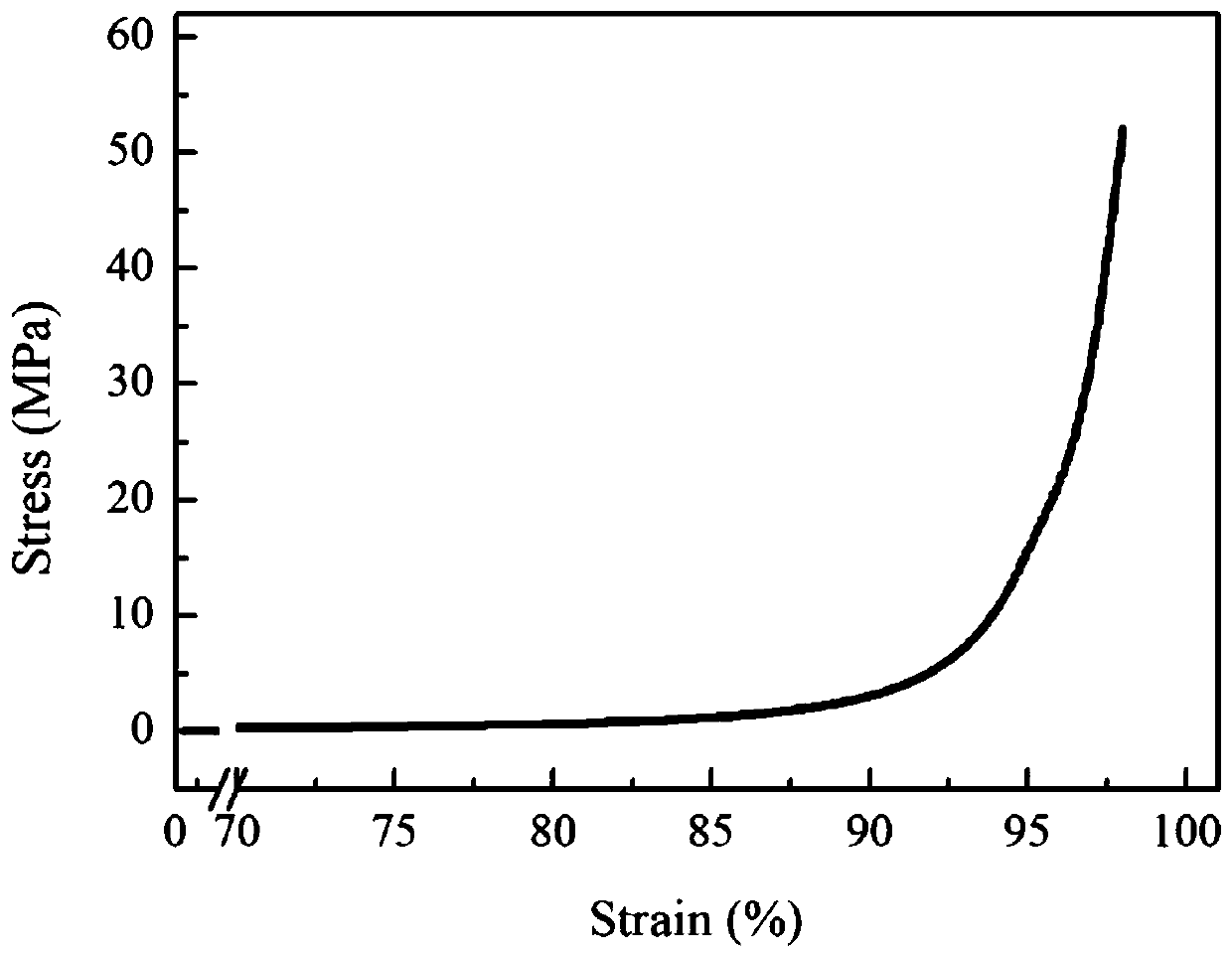High-strength responsive hydrogel based on block copolymer and preparation method thereof
A block copolymer, high-strength technology, applied in the field of high-strength responsive hydrogel and its preparation, can solve problems such as no public reports on research, and achieve a green and safe preparation process, short time consumption, and fewer by-products. Effect
- Summary
- Abstract
- Description
- Claims
- Application Information
AI Technical Summary
Problems solved by technology
Method used
Image
Examples
Embodiment 1
[0033] Step 1: Dissolve 10g of completely dry F108 in a three-neck flask filled with 200mL of dichloromethane, and blow nitrogen gas while stirring. After F108 is completely dissolved, add 1.4g of triethylamine, and slowly add 1.2g of it dropwise with a dropping funnel Acryloyl chloride (at this time, the amount of triethylamine and acryloyl chloride used is 10 times that of the hydroxyl group in F108), and the total dropping time is controlled to be 30min. After the dropwise addition, the reaction solution was stirred at room temperature for 10 h, and the entire reaction was controlled to proceed under anhydrous conditions. After completion of the reaction, the reaction solution was filtered several times to remove triethylamine hydrochloride generated in the reaction. The remaining liquid was poured into petroleum ether and filtered several times, and the obtained solid was dried in a vacuum oven at 30° C. for 2 hours to obtain double-terminal acryloyl F108 (F108DA).
[003...
Embodiment 2
[0036]Step 1: Dissolve 10g of completely dry P123 in a three-necked flask containing 200mL of dichloromethane, and blow nitrogen gas while stirring. After P123 is completely dissolved, add 3.5g of triethylamine, and slowly add 3.1g of it dropwise with a dropping funnel Acryloyl chloride (at this time, the amount of triethylamine and acryloyl chloride used is 10 times that of the hydroxyl group in P123), and the total dropping time is controlled to be 30min. After the dropwise addition, the reaction solution was stirred at room temperature for 48 h, and the entire reaction was controlled to proceed under anhydrous conditions. After completion of the reaction, the reaction solution was filtered several times to remove triethylamine hydrochloride generated in the reaction. The remaining liquid was poured into petroleum ether and filtered several times, and then the obtained solid was dried in a vacuum oven at 25° C. for 20 h to obtain double-terminal acryloyl P123 (P123DA).
[0...
Embodiment 3
[0039] Step 1: Dissolve 10g of completely dry F68 in a three-necked flask filled with 100mL of dichloromethane, and blow nitrogen gas while stirring. After F68 is completely dissolved, add 1.2g of triethylamine, and slowly add 1.1g of it with a dropping funnel Acryloyl chloride (at this time, the amount of triethylamine and acryloyl chloride used is 5 times that of the hydroxyl group in F68), and the total dropping time is controlled to be 15 min. After the dropwise addition, the reaction solution was stirred at room temperature for 24 h, and the whole reaction was controlled to proceed under anhydrous conditions. After completion of the reaction, the reaction solution was filtered several times to remove triethylamine hydrochloride generated in the reaction. The remaining liquid was poured into petroleum ether and filtered several times, and the obtained solid was dried in a vacuum oven at 20° C. for 48 hours to obtain double-terminated acryloyl F68 (F68DA).
[0040] Step 2:...
PUM
 Login to View More
Login to View More Abstract
Description
Claims
Application Information
 Login to View More
Login to View More - R&D
- Intellectual Property
- Life Sciences
- Materials
- Tech Scout
- Unparalleled Data Quality
- Higher Quality Content
- 60% Fewer Hallucinations
Browse by: Latest US Patents, China's latest patents, Technical Efficacy Thesaurus, Application Domain, Technology Topic, Popular Technical Reports.
© 2025 PatSnap. All rights reserved.Legal|Privacy policy|Modern Slavery Act Transparency Statement|Sitemap|About US| Contact US: help@patsnap.com


